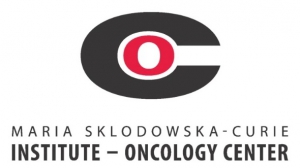The pancreas
The pancreas is a gland that is located in the upper abdomen, behind the stomach. It is approximately 15 cm (6 inches) long and divided in three areas; the so-called head (close to the duodenum), the body and the tail (which ends at the level of the spleen).
This gland has two tasks; it delivers digestive juices (enzymes) to the duodenum and produces hormones that regulate our blood glucose levels. The most important being insulin.
Pancreatic cancer
Pancreatic cancer arises when pancreas cells multiply out of control, and form a mass that has the ability to invade surrounding organs. Signs and symptoms of pancreatic cancer may include stomach or back pain, loss of appetite, unexplained weight loss, yellow skin (jaundice), discolored stools or dark urine.
However, symptoms typically do not develop until a late disease stage. Therefore, by the time of diagnosis, cure may no longer be possible. Pancreatic cancer rarely occurs before the age of 50 and more than half of the affected individuals are over 70 years of age.
Risk factors
Risk factors for pancreatic cancer include:
- Tobacco smoking
- Excessive alcohol use
- Obesity
- Diabetes
- Chronic inflammation of the pancreas (chronic pancreatitis)
- Family history of pancreatic cancer
- Certain inherited gene mutations
- African-American descent
- Ashkenazi Jewish descent
- Blood types A, B and AB
Inherited risk
An inherited mistake (mutation) in our genetic material (DNA) can cause an increased risk of developing pancreatic cancer. Approximately 10% of pancreatic cancers seem to be hereditary. These cases can be divided into two groups.
- In the first group (3% of all cases), a known gene mutation is identified. The following mutations can increase the risk of developing pancreatic cancer:
- CDKN2A mutations; Familial Atypical Multiple Mole Melanoma syndrome (FAMMM)
- STK11/LKB1 mutations; Peutz-Jeghers syndrome
- BRCA1 or BRCA2 mutations; Hereditary Breast and Ovarian Cancer (HBOC)
- Mismatch repair gene mutations (MLH1/MSH2/MSH6) ; Lynch syndrome
- p53 mutations; Li Fraumeni syndrome
- In the second group (7% of all cases), no known gene mutation is found, but an inherited susceptibility is suspected, because pancreatic cancer runs in the family.
A geneticist is able to assess family cases, to test for gene mutations and to explain more about a possible inherited risk of developing pancreatic cancer.
Surveillance
Like most cancers, pancreatic cancer develops slowly and in stages. Normal pancreas cells can transform into benign precursor lesions. These precursor lesions can – but not necessarily have to – change into malignant cells. These malignant cells can multiply, thereby growing into cancer.
Surveillance for pancreatic cancer aims to detect benign precursor lesions before they develop into cancer, or detect cancer in the earliest possible stage, in which curation is still possible.
Currently, there is no official guideline for surveillance for pancreatic cancer. Nevertheless, in identified high-risk individuals (persons with the highest inherited risk) surveillance is attempted. The most common strategy is regular imaging of the pancreas by magnetic resonance imaging (MRI) and/or endoscopic ultrasonography (ultrasound, performed during endoscopy of the stomach/duodenum). This strategy seems feasible, but still needs to be proven effective. Therefore, surveillance is only performed in the context of medical research and only in those individuals with the highest inherited risk.
Treatment
Surgery provides the only possible cure for pancreatic cancer. Whether surgery is possible depends on the size and location of the tumor, how much it has spread, and the general condition of a patient. Often, surgery is combined with chemotherapy and/or radiation. Unfortunately, for the majority of patients with pancreatic cancer, treatment is not successful because the cancer is too large or has spread to other organs. The best treatment results are seen in patients in whom a small pancreatic cancer was surgically removed.














